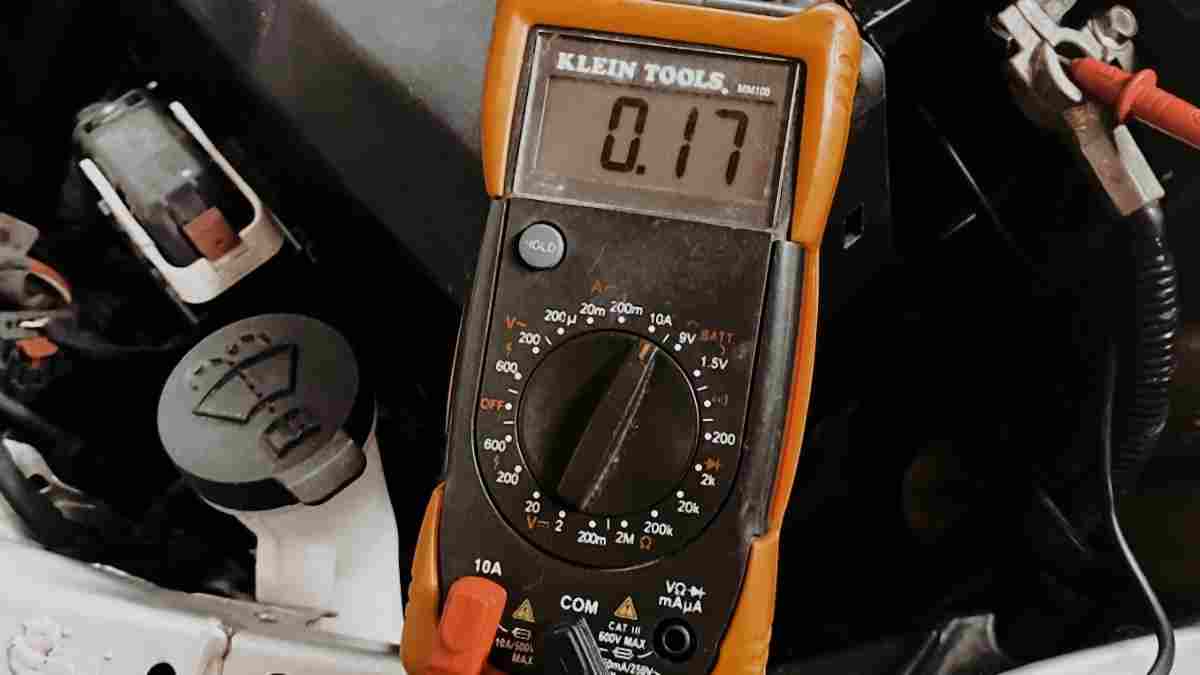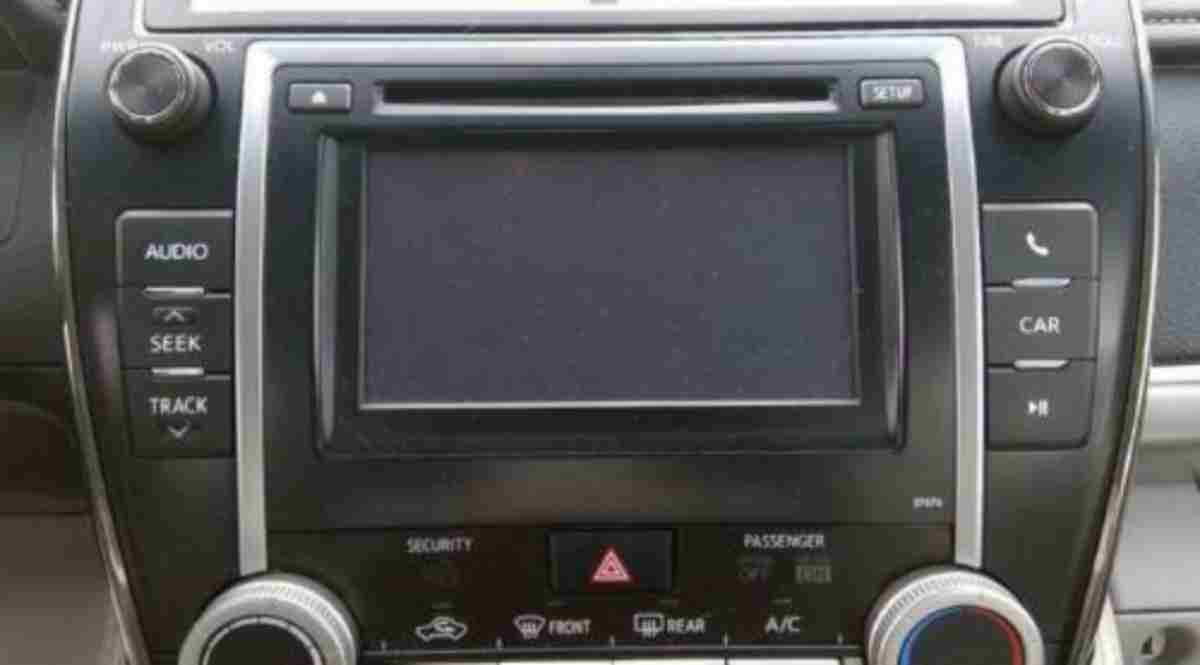You want to fix parasitic battery drain if you’re facing one. Typically, you’d notice that your car draws m excessive power from the battery, even when the lights and other electrical components have been turned off.
The good news: you can find the parasitic battery drain without professional mechanic skills. The usual process involves connecting a digital multimeter to your car’s negative battery terminal. You’d then remove the fuses one after the other while monitoring for any changes in the reading. When you notice a change, you just caught the parasitic drain and can apply the necessary fix.

How to fix parasitic battery drain
Follow the steps below carefully to find and fix a parasitic battery drain:
1. Disconnect every device from your car
The first step is to disconnect electronic devices from your car, including A/C or heat, turning off the radio, windshield wiper, and lights, to mention a few. Next, do the following:
- Close the glovebox and lighted mirror covers.
- Put on the emergency brake, turn the car engine and remove the key from the ignition.
- Close the trunk and doors or back hatch to prevent the circuits from getting activated.
- Remove plugged-in cables, including a phone charger and GPS.
In some cases, disconnecting the battery could require inputting a security code after turning on your car. You can refer to your owner’s manual for the code.
2. Charge your car battery
You have to fully charge your car battery to make finding the parasitic power draw more accurate. Open the engine hood and find the battery, then charge it with a recommended battery charger to 100%. A fully charged car battery voltage should measure 12.6 volts, with the engine turned off—Jiffy Lube International, Inc. This is known as resting voltage.
Use your multimeter to ensure the battery is fully charged. If the battery won’t read 12.6 volts, or it is old or damaged, consider getting a replacement battery.
Now, disconnect the negative battery cable from the negative battery terminal. The negative cable is typically marked “(–)” and sometimes has a black cover over it. If applicable, remove the cover and unbolt it from the terminal with a wrench.
Note that you need the negative cable for the parasitic drain test and not the positive cable. Using the positive cable can cause electrical shorts.
Read also: good alternator but battery won’t charge?
3. Set up and connect the digital multimeter
A multimeter comes with black and red wire, as well as various input slots. You’d have to connect the black wire to the “com” (common ground) input and the red into the highest amp input, typically 20A.
Now, set the multimeter dial to measure “amps”. Make sure you buy a digital meter capable of reading up to 20 amps and down to 200 milliamps.
The next step is to connect the multimeter to the negative battery cable and terminal. To do this, the red lead should be placed through the metal circle at the negative battery cable end, then touch the black lead to the negative battery terminal.
Consider using plastic clamps to hold the leads in place while the meter keeps working.
If the reading goes over 50 milliamps, there’s a parasitic battery drain. A known component that draws from the battery is the clock on the radio, so you may get between 20 and 50 milliamps reading. Higher than that, a component is using excessive power.
4. Inspect the fuses
This involves pulling out each fuse while monitoring the multimeter reading. You should find the fuse box under the hood or refer to your owner’s manual. Get a fuse puller for the fuse removal and start from fuses with the least amp ratings towards ones with higher amp ratings.
Whenever you pull a fuse, check if the multimeter reading changes. If there’s no change, move to use next and place back the removed one.
After checking the fuses in the fuse box under the hood, proceed to check the fuses in the fuse box(es) under the dashboard. You need an assistant so that as one person pulls a fuse, the other person checks the multimeter reading. If you’re doing this alone, just place the meter against the windshield from the car interior to see the reading.
Make sure to disconnect the multimeter before opening the door to check the dash fuses. Clamp a scrap wood over the door to disable and keep it depressed before reconnecting the multimeter.
If the reading drops significantly while pulling a fuse, stop the process. Nonetheless, it’s normal for a multimeter reading to drop a few milliamps when you remove a fuse. But a significant drop like the reading going from 3.03 amps to 0.03 amps means you’ve found the electrical circuit causing the parasitic battery drain.
5. Check what runs on the affected circuit
Refer to the fuse box chart or your owner’s manual to know the specific components powered by the fuse responsible for the battery drain. You can also follow the wiring diagram for that particular circuit to narrow down the problem. Alternatively, check online for digital copies of the manual and wiring diagrams.
Check all the devices on that circuit by replacing the fuse and disconnecting each heater, lamp, or electrical device one after the other, and flip the corresponding component switches.
Now, look at the multimeter reading for any drop to find the component causing the parasitic battery drain. For example, if the problematic fuse controls the power antenna and radio, you want to disconnect your car radio to check if the power draw stops. If it won’t stop, disconnect the antenna and check for a drop on the multimeter reading.
6. Fix the faulty component
When you detect the responsible fuse, trace its component and have it repaired to fix the battery drain. Next, disconnect the multimeter, and reconnect the battery.
Note that the repairs depend on the cause of the power draw. Thus, if you can’t fix the problem yourself, consider contacting a mechanic for repairs or replacements. However, if you can fix the problem yourself, check the multimeter reading to see if it’s less than 50 milliamps. When done, disconnect your multimeter and reconnect the battery cable.
In some cases, flipping off a switch may fix the drain. In extreme cases, you could be facing a wiring harness problem, which is more complex.


